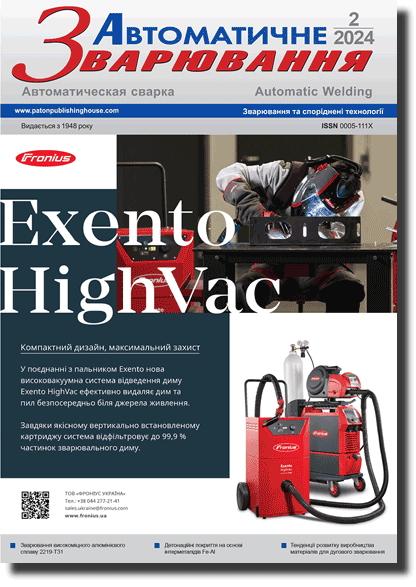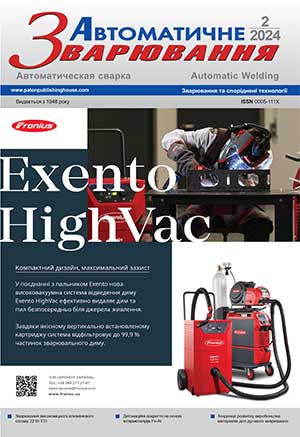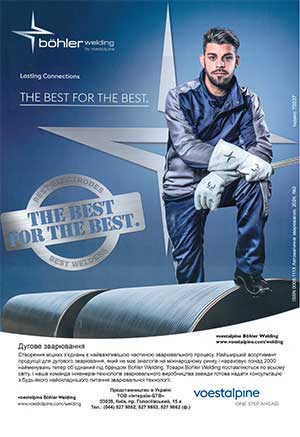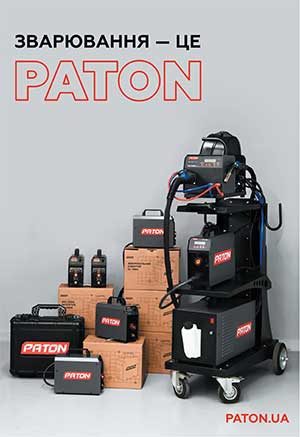| 2024 №02 (07) |
DOI of Article 10.37434/as2024.02.01 |
2024 №02 (02) |
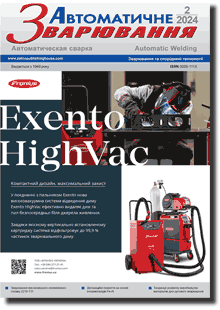
"Avtomatychne Zvaryuvannya" (Automatic Welding), #2, 2024, pp. 3-11
Study of the influence of GMAW-CMT and PULSE processes of additive deposition of silicon bronze CuSi3Mn1 on the geometric characteristics of the surface, structure and stress strain state of finished products
A.O. Perepichay, I.M. Lahodzinskyi
NTUU «Igor Sikorsky Polytechnic Institute». 37 Beresteyskiy Ave., 03056, Kyiv, Ukraine. E-mail: perepichayandrey@gmail.comSilicon bronzes of CuSi3Mn1 type (BrKMts3-1) are widely used in the machine-building, aerospace, and mining industries due to their properties. Given the rather high cost of copper-based non-ferrous alloys, the use of wire-arc additive manufacturing (WAAM) technologies is relevant. Cold Metal Transfer (CMT) and pulse arc surfacing (Pulse process) are used to prevent overheating and reduce the heat input during surfacing of copper-based alloys. The results of studies of layer-by-layer surfacing of silicon bronze indicate a certain dependence of geometric characteristics, structural composition, and susceptibility to defect formation on the applied surfacing method (GMAW-CMT/Pulse). Short-circuit surfacing provides a greater height of each bead than with pulse current supply (up to 25 %) and a reduction in the width of each bead, respectively. However, the surface unevenness also increases. The sample deposited by the GMAW-Pulse method contains critical defects in the form of transverse cracks. The stress-strain state modeling for the pulse surfacing method indicates a critical accumulation of normal tensile stresses, which, in combination with the anisotropic structure of the metal, may be the cause of crack formation. 16 Ref., 2 Tabl., 10 Fig.
Keywords: WAAM, GMAW, Cold Metal Transfer, pulse arc surfacing, additive technologies, CuSi3Mn1, layer-by-layer surfacing
Received: 06.12.2023
Received in revised form: 15.01.2024
Accepted: 23.02.2024
References
1. Ding, D, Pan, Z, Cuiuri, D, Li, H, Larkin, N. (2016) Adaptive path planning for wire-feed additive manufacturing using medial axis transformation. J. of Cleaner Production, 133, 942-952. https://doi.org/10.1016/j.jclepro.2016.06.0362. Mukin, D., Valdaytseva, E., Hassel, T., Klimov, G., Shalnova, S. (2020) Modelling of heat transfer process in non-vacuum electron beam additive manufacturing with CuSi3 alloy wire. Materials Today: Proceedings, 30(3), 373-379. https://doi.org/10.1016/j.matpr.2019.12.380
3. Mukin, D.V., Ivanov, S.Yu., Valdaitseva, E.A., Turichin, G.A., Beniash, A.E. (2019) An Analytical Model for Filler Wire Heating and Melting during Wire Feed Laser Deposition. KEM 822, 431-437. https://doi.org/10.4028/www.scientific.net/KEM.822.431
4. Spittel, Marlene, Spittel, Thilo. (2016). Flow stress and plasticity of CuSi3Mn1. https://doi.org/10.1007/978-3-642-14174-4_62
5. Yanhu, W., Xizhang, C., Sergey, K. et al. (2019) In-situ wirefeed additive manufacturing of Cu-Al alloy by addition of silicon. Applied Surface Science, 487, 1366-1375. https://doi.org/10.1016/j.apsusc.2019.05.068
6. Kun, L. et al. (2019) Location dependence of microstructure and mechanical properties of Cu-Al alloy fabricated by dual wire CMT. Materials Research Express, 6(12). https://doi.org/10.1088/2053-1591/ab583e
7. Wang, Y., Konovalov, S., Chen, X. et al. (2021) Research on Cu-6,6 % Al-3,2 % Si Alloy by Dual Wire Arc Additive Manufacturing. Journal of Materials Engineering and Performance, 30, 1694-1702. https://doi.org/10.1007/s11665-021-05470-4
8. Kazmi, K.H., Sharma, S.K., Das, A.K. et al. (2023) Development of Wire Arc Additive Manufactured Cu-Si Alloy: Study of Microstructure and Wear Behavior. J. of Materials Engineering and Performance. https://doi.org/10.1007/s11665-023-07972-9
9. Kvasnytskyi, V.V., Lahodzinskyi, I.M. (2023) Influence of GMAW and PAW methods of additive arc surfacing and shielding gas composition on surface geometry and metal structure. Avtomatych. Zvar., 11, 23-31. https://doi.org/10.37434/as2023.11.02
10. Baby, J., Amirthalingam, M. (2020) Microstructural development during wire arc additive manufacturing of copper-based components. Welding in the World, 64, 395-405. https://doi.org/10.1007/s40194-019-00840-y
11. Gang, M., Xueming, H., Ye, H. et al. (2020) Study on the microstructure optimization and mechanical properties of dissimilar TC4-304L arc-brazing joints, Materials Science and Engineering: A, 788. https://doi.org/10.1016/j.msea.2020.139566
12. Donghong, D., Zengxi, P., Dominic С. et al. (2016) Adaptive path planning for wire-feed additive manufacturing using medial axis transformation. J. of Cleaner Production, 133, 942-952. https://doi.org/10.1016/j.jclepro.2016.06.036
13. Yu, Z.S., Li, R.F., Zhou, F.M. et. al. (2004) Joint evolution and strengthening mechanisms in arc brazed galvanised steels with Cu97Si3 filler. Materials Science and Technology, 20(11), 1479-1483. https://doi.org/10.1179/026708304225022133
14. Kvasnytskyi, V., Korzhyk, V., Lahodzinkyi, I. et al. (2020) Creation of volumetric products using additive arc cladding with compact and powder filler materials. IEEE 10th International Conference Nanomaterials: Applications & Properties (NAP), pp. 02SAMA16-1-02SAMA16-5. https://doi.org/10.1109/NAP51477.2020.9309696
15. Gurcik, T., Kovanda, K., Rohan, P. (2019) Influence of shielding gas on geometrical quality of WAAM technology. METAL 2019 - 28th International Conference on Metallurgy and Materials, Conference Proceedings, 715-721. https://doi.org/10.37904/metal.2019.871
16. Mou, G., Hua, X., Wu, D. et al. (2017) Study on weld seam surface deposits of CuSi3 CMT brazing. The International J. of Advanced Manufacturing Technology, 92, 2735-2742. https://doi.org/10.1007/s00170-017-0349-3
Advertising in this issue:
The cost of subscription/purchase order journals or individual articles
| Journal/Currency | Annual Set | 1 issue printed |
1 issue |
one article |
| TPWJ/USD | 384 $ | 32 $ | 26 $ | 13 $ |
| TPWJ/EUR | 348 € | 29 € | 24 € | 12 € |
| TPWJ/UAH | 7200 UAH | 600 UAH | 600 UAH | 280 UAH |
| AS/UAH | 1800 UAH | 300 UAH | 300 UAH | 150 UAH |
| AS/USD | 192 $ | 32 $ | 26 $ | 13 $ |
| AS/EUR | 180 € | 30 € | 25 € | 12 € |
| SEM/UAH | 1200 UAH | 300 UAH | 300 UAH | 150 UAH |
| SEM/USD | 128 $ | 32 $ | 26 $ | 13 $ |
| SEM/EUR | 120 € | 30 € | 25 € | 12 € |
| TDNK/UAH | 1200 UAH | 300 UAH | 300 UAH | 150 UAH |
| TDNK/USD | 128 $ | 32 $ | 26 $ | 13 $ |
| TDNK/EUR | 120 € | 30 € | 25 € | 15 € |
AS = «Automatic Welding» - 6 issues per year;
TPWJ = «PATON WELDING JOURNAL» - 12 issues per year;
SEM = «Electrometallurgy Today» - 4 issues per year;
TDNK = «Technical Diagnostics and Non-Destructive Testing» - 4 issues per year.





